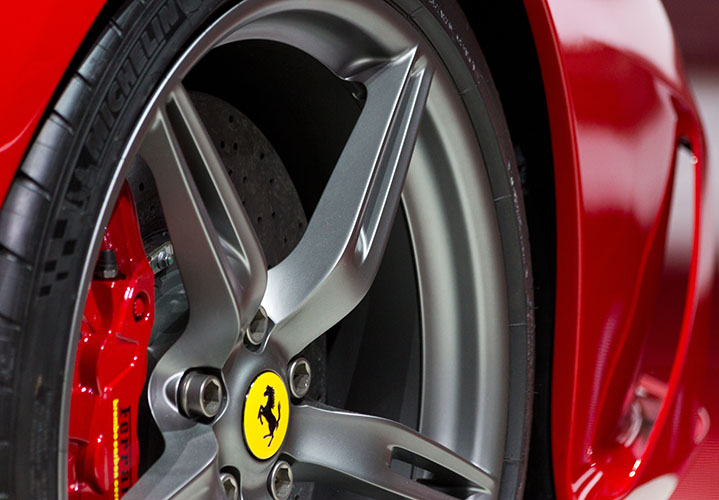In a case involving the Ferrari model FXX K, the Court of Justice of the European Union (CJEU) has confirmed that publication of images of the whole product (in this case a car) can give rise to separate unregistered design rights in the individual components. This avoids the need to publish details of the various parts of the product separately and will make it easier for producers to take action against third parties who copy individual parts.
An English version of the judgment can be found here[i].
Background
In December 2014, Ferrari published a press release containing photographs of its Ferrari model FXX K which was limited to racetrack use only.
In 2016, it came to Ferrari’s attention that Mansory Design Holding GmbH (Mansory Design) was selling tuning kits designed to allow a user to transform the appearance of a road legal Ferrari (model 448 GTB) so that it looked more like an FXX K.
Ferrari filed a claim in the German courts asserting Community unregistered design rights in specific parts of the FXX K, seeking an injunction to stop Mansory from selling the tuning kits throughout the EU. Such rights were claimed to arise from the publication of the 2014 press release, which contained images of the overall appearance of the FXX K.
 Photographs from the CJEU’s judgment
Photographs from the CJEU’s judgment
Ferrari sought to rely on:
- The V-shaped element of the FXX K’s bonnet
- A fin-like element or “strake” and the front lip spoiler integrated into the bumper
- A vertical bridge in the centre of the FXX K connecting the front spoiler to the bonnet
After a number of decisions and appeals in the German courts, the German Federal Court of Justice sought clarification from the CJEU on whether an image of the overall product could give rise to unregistered Community design rights in specific parts of such product.
The questions considered by the CJEU were:
- Whether an unregistered Community design right could arise in individual parts of a product as a result of disclosure of an overall image of such product; and, if so
- Which legal criterion (e.g. consistency of form and autonomy) should be applied to assess individual character in respect of determining the overall impression of an individual component of a complex product
The decision
The CJEU found that publication of the overall design of a product might also involve publication of a specific part of such product. However for unregistered Community design right to arise, it was essential that the appearance of such part was clearly identifiable from the relevant disclosure; any part for which protection is sought must be a visible section defined by particular lines, contours, colours, shape or texture and must be capable of producing its own “overall impression” which is not lost in the overall impression produced by the product as a whole.
The German courts will now reconsider this case in light of the CJEU’s guidance.
How does this EU decision affect the UK?
UK law post Brexit contains an equivalent of the unregistered Community design right, known as the Supplementary Unregistered Design Right (SUD), which protects unregistered designs in the UK. Some Community unregistered designs existing at Brexit also continue in the UK for the remainder of their three year term. The English courts are not obliged to follow this CJEU decision in relation to such designs in the UK, but it is likely that they will do so.
In addition, UK designers may benefit from the UK unregistered design right, which protects the shape of three-dimensional articles. Where the article qualifies, this protection may last for up to ten years from the date of first marketing.
[i] Case C-123/20

 Tom Lingard
Tom Lingard